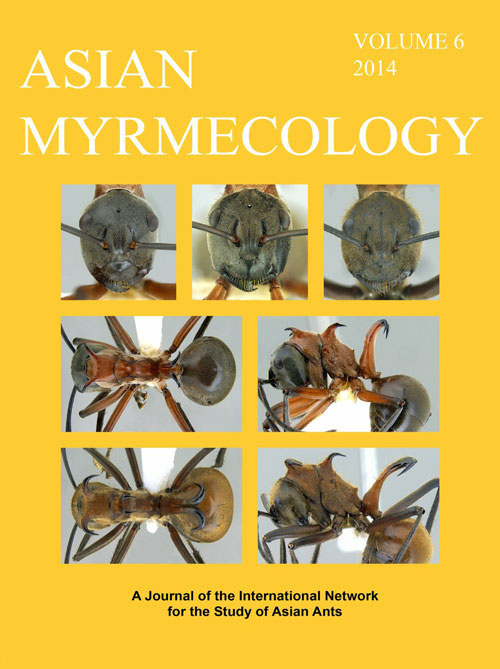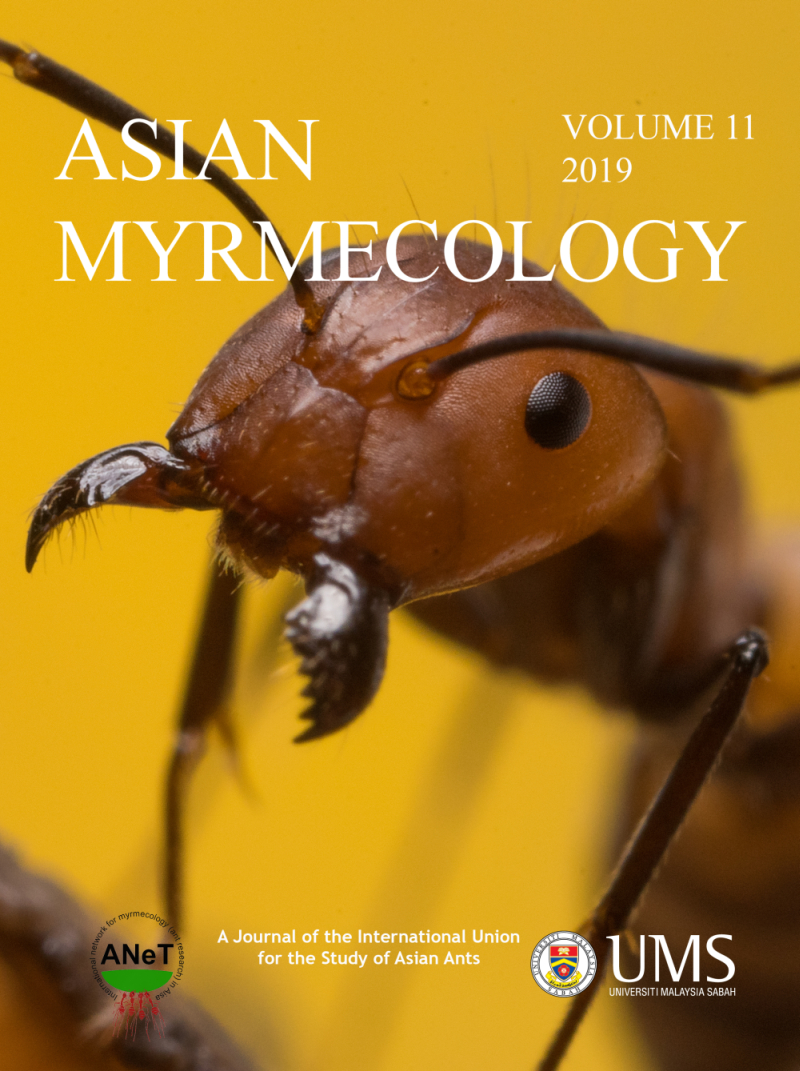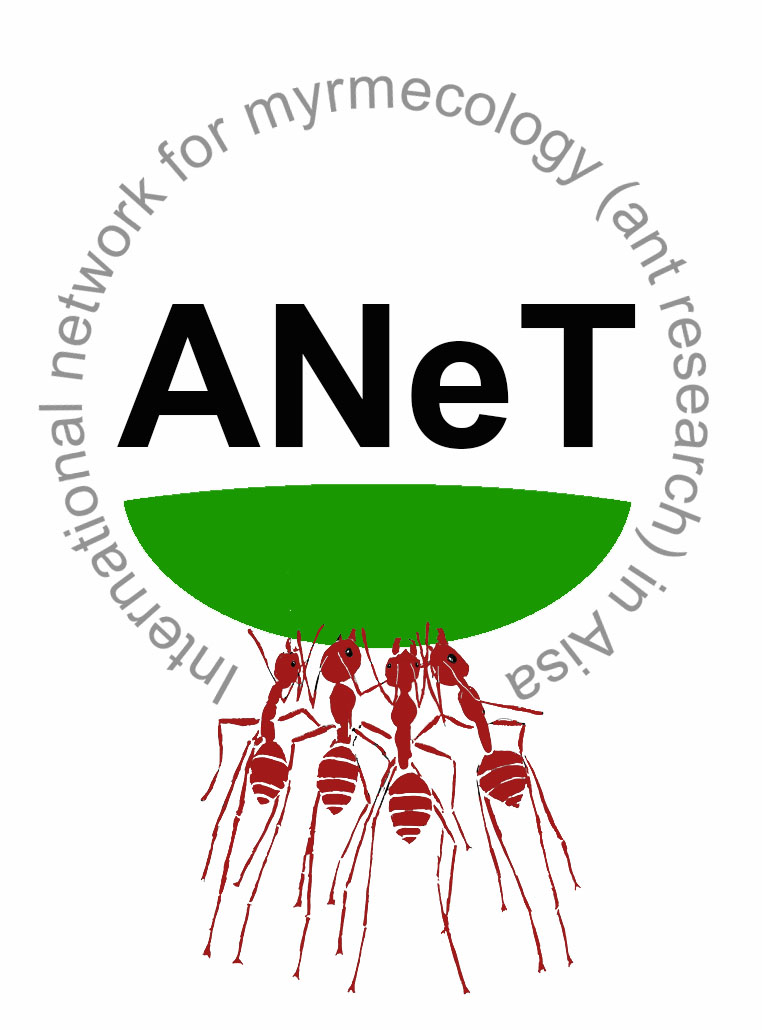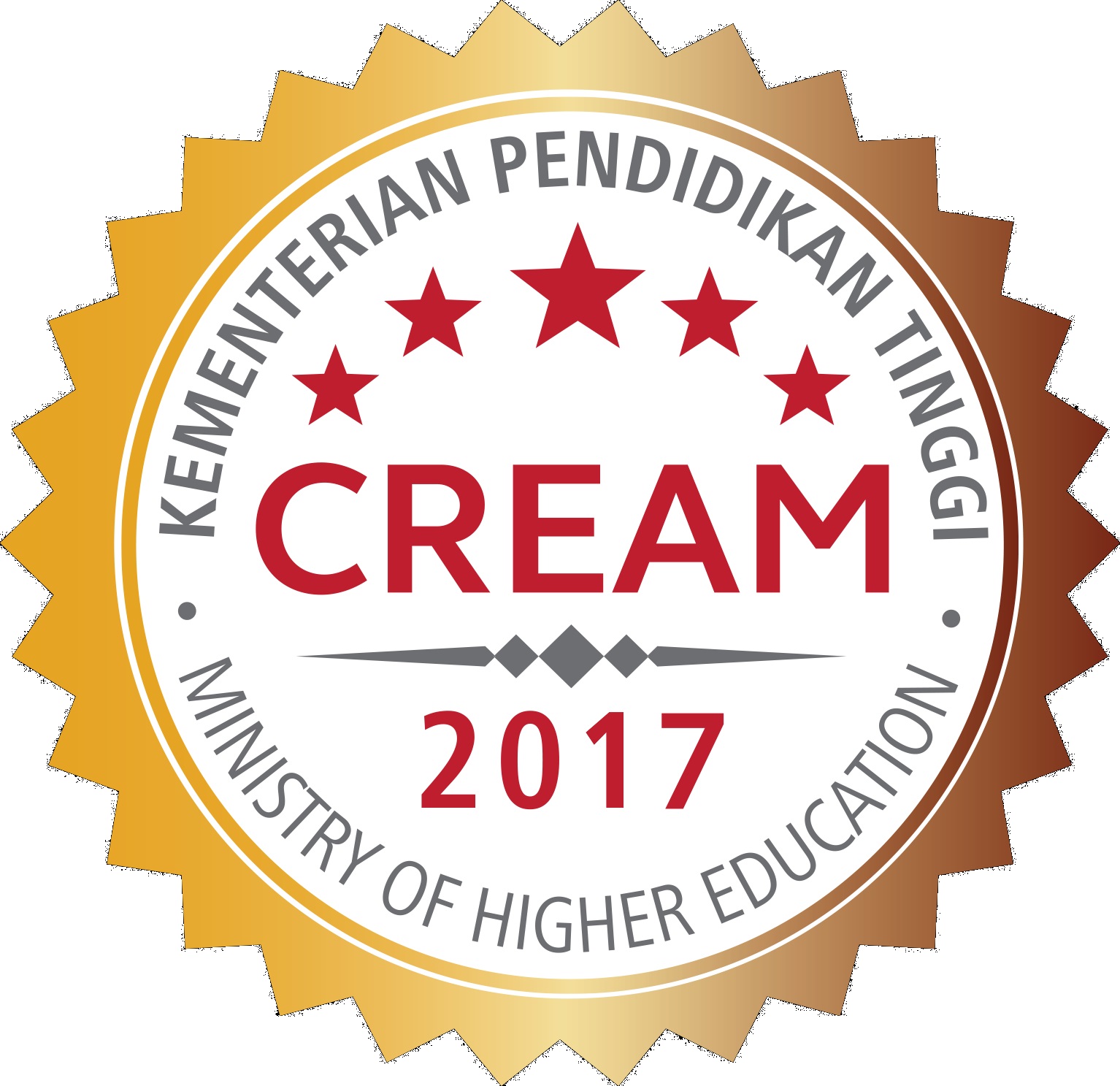ASIAN
MYRMECOLOGY
Image: François Brassard
Ecology and Distribution
Asian Myrmecology, Volume 6, pages 49-61, published June 2014
DOI: 10.20362/am.006004
Philidris ants living inside Dischidia epiphytes from Thailand
CHRISTIAN PEETERS1* & DECHA WIWATWITAYA2
Abstract:
The epiphyte Dischidia major has highly modified leaves (‘pitchers’) that provide lodging for various ants, especially Philidris (Dolichoderinae) but also Cataulacus and Crematogaster (Myrmicinae). In return, the plants can obtain extra nutrients but this depends on intimate contact between the branching adventitious roots growing within inhabited pitchers and the organic debris brought in by the ants. D. major pitchers were sampled in two very different habitats in Thailand: coastal heathland in the South, and the canopy of a 30 m-high Dipterocarpus alatus in the North-East. We recognized only one species of Philidris in these two locations. Up to a few hundreds of workers and many brood were found in each pitcher. Several dealate queens were all mated and egg-laying. Workers are polymorphic in size and morphometric analysis showed that large individuals have disproportionally big heads. Importantly, Philidris th01 divided each pitcher into compartments by building walls around the roots; this increases surface area for their brood but this selfish behaviour also matches the epiphyte’s trophic interests. The entrances of adjacent pitchers were often enclosed by soil runways, connecting separate pitchers into one extensive nest. This external accumulation of substrate may also benefit the epiphyte. Philidris th01 occurs in different habitats throughout Thailand, including disturbed vegetation. Some nests were found away from D. major, indicating that this ant-plant mutualism is not obligate.
Keywords:
mutualism, symbiosis, myrmecophyte, ant-plant, domatia, polygyny, worker polymorphism, Crematogaster
Get PDF (1530K):
1Laboratoire d’Ecologie, CNRS UMR 7625, Université Pierre et Marie Curie, 7 quai Saint Bernard, 75005 Paris, France
2Department of Forest Biology, Kasetsart University, 10900 Bangkok, Thailand
*Corresponding author: cpeeters@snv.jussieu.fr



